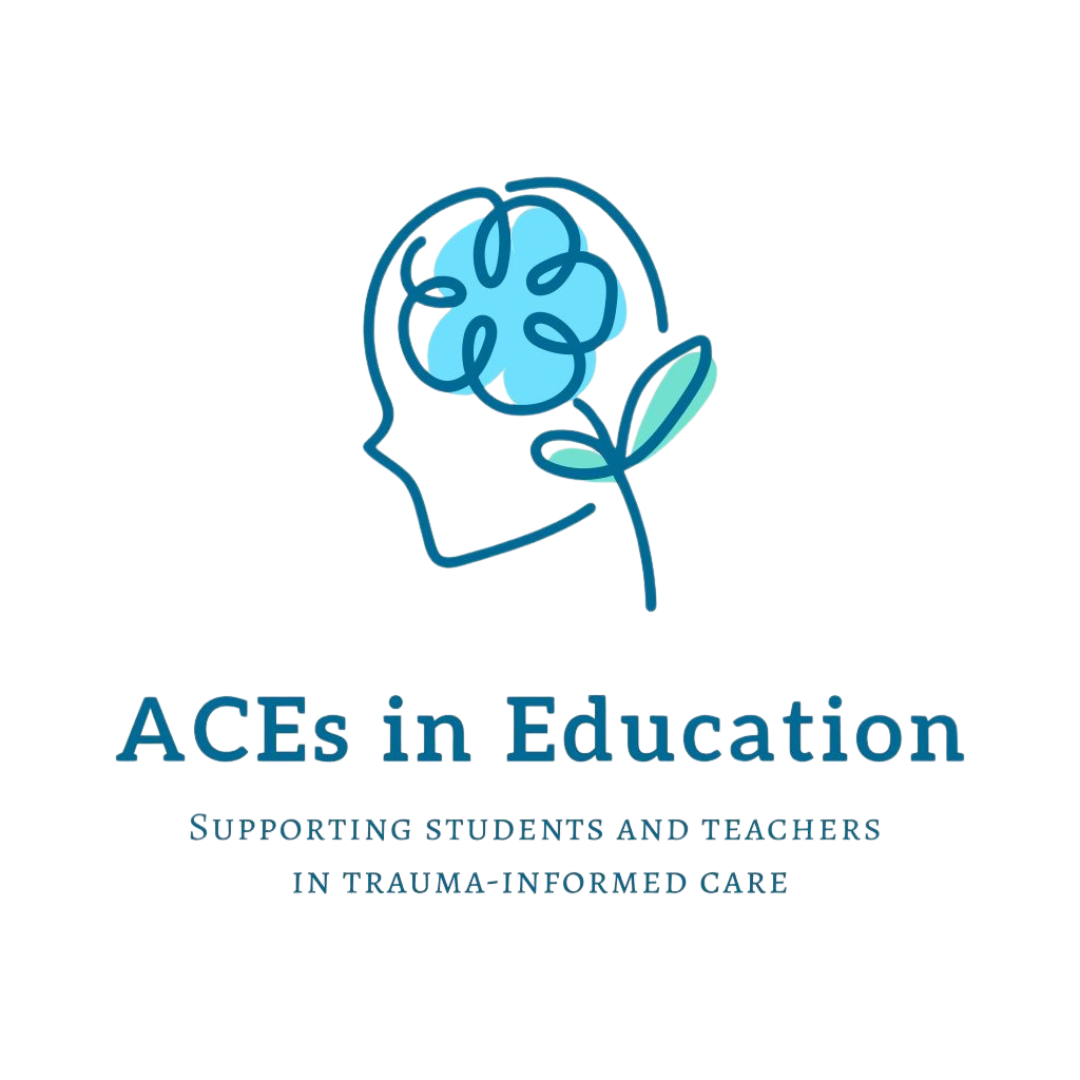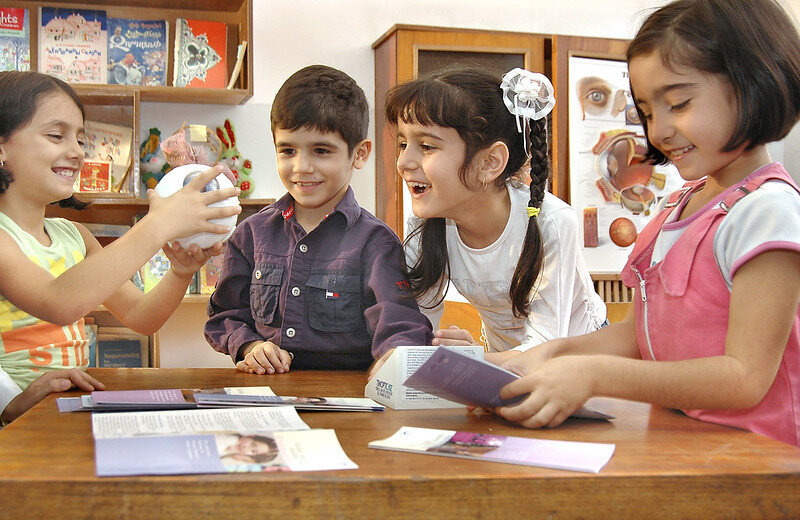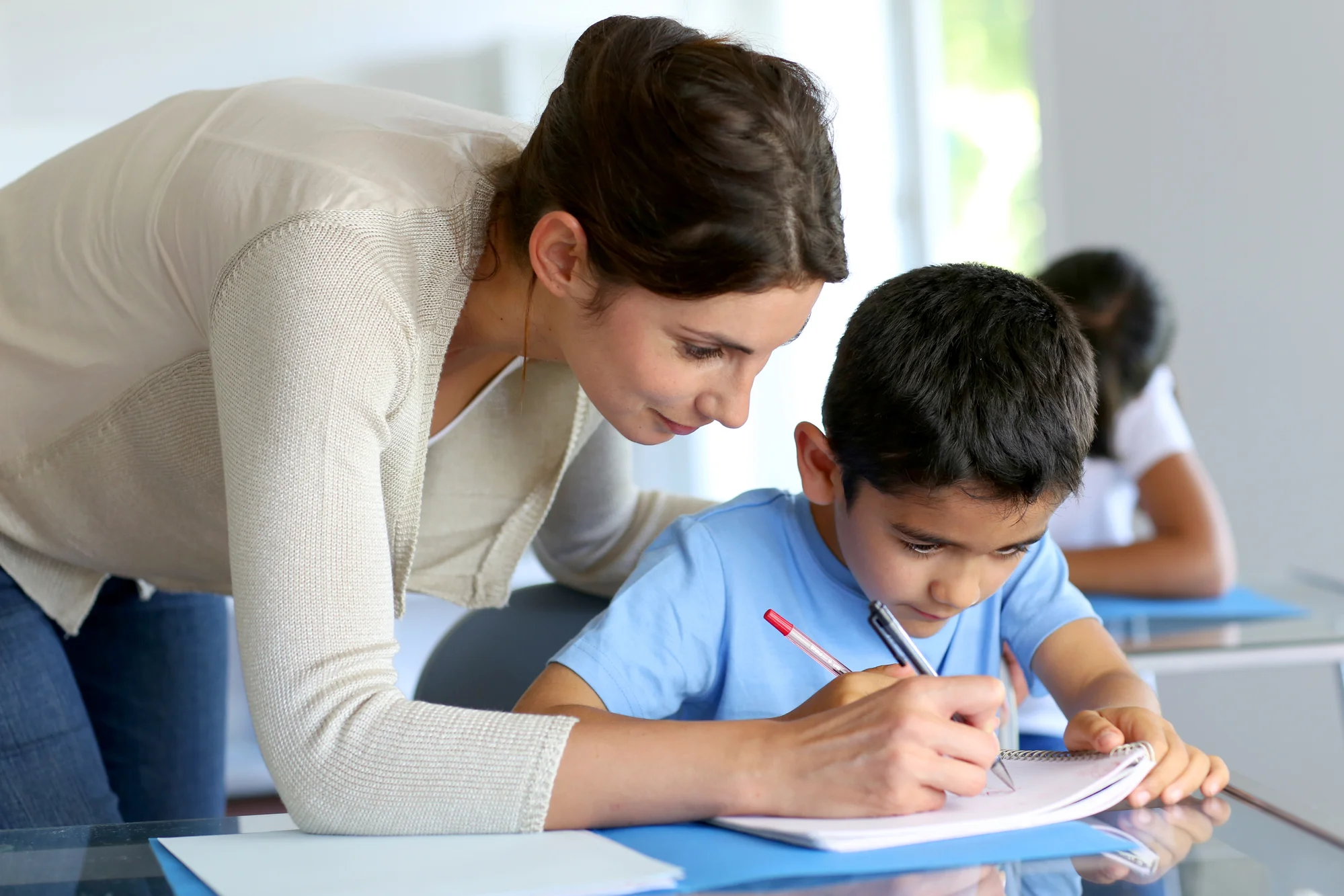
ACEs in Education Blog
Explore articles, stories, and resources designed to support educators in creating trauma-informed classrooms where students feel safe, connected, and ready to learn.
A Post-Middle of Pandemic Classroom
Students who feel safe in your classroom are ready to learn
Like millions of teachers across the country, I have spent the last weeks getting my classroom ready for students to return. My desks have been properly arranged for covid safe distancing while still allowing for collaboration and small group instruction. My supplies are placed in their proper color-coded baskets, and my bulletin boards have been freshly assembled. I am ready!
But, after 18 months of pandemic education, is that really all our students need?
Our students are coming back to the classroom with even more trauma than they may have already experienced pre-pandemic. What they really need is a safe, secure place to land. Yes, the organized, fresh classroom is part of creating that safe place; but, there is a lot more we can do to provide a safe, trauma-informed, and trauma-sensitive classroom.
Howard Bath, in his article The Three Pillars of Trauma-Informed Care, writes that there are three universal components to providing support to those impacted by trauma. They are:
1. Safety
2. Connection
3. Managing Emotions
In this three-part series, I will look at each of these pillars of trauma-informed care and offer some practical ways we can meet these trauma needs in the classroom. Let’s start with safety…
Safety
Unfortunately, the defining experience of any child who has experienced complex trauma is that of feeling unsafe. These children develop a pervasive mistrust of the adults with whom they interact, and as Seita and Brendtro (2005) point out, they become “adult wary,” employing a range of strategies that keep adults at bay. -Howard Bath
When was the last time you didn’t feel safe? Do you remember the racing heart feeling? Did you notice you were breathing with quick, shallow breaths? Did you want to fight, flee, or freeze? When we do not feel safe our pre-wired safety brain kicks into gear, ready to keep us alive. Our students who have experienced trauma come to us with an overactive survival brain. They are constantly asking the question, “Am I safe here?” “Can I trust this adult?” As teachers, we need to create a classroom that answers their questions with a definitive yes! It is not as difficult as you may think. In fact, many excellent teachers do these things without even knowing they are trauma-informed practices.
Consistency, reliability, predictability, availability, honesty, and transparency are all attributes that are related to the creation of safe environments for children. -Howard Bath
Below are 4 ways you can create a classroom that provides a sense of safety for all students; but especially those that come to you who have experienced trauma.
A disorganized classroom can cause students to feel anxious and become distracted.
Provide a Calm Space.
Both the tone of your voice and the lighting in the classroom can help to create a space that is calm. Students who come to us having experienced adverse childhood experiences are many times in a state of dysregulation; their stress response is in overdrive. When we use loud, aggressive tones it will almost always escalate a student and lead to a student shutting down or acting out. Speak with calm authority, and you will find your students are much more attentive and responsive. Harsh, overhead, fluorescent lighting can create a feeling of anxiety, bodily stress, or hyperactivity; all things the kids with an overactive stress response are already prone to. Add floor lamps with soft light to your classroom and turn off the overhead lights. You can also cover several of the overhead lights with fluorescent light covers. You can find them here. More on creating calm when we look at managing emotional responses in part 3.
Provide predictable and consistent procedures
Children who have lived in chaos crave predictability. If the home is a place where they do not know what is coming next or what they can count on, a classroom that has consistent procedures will provide a much-needed sense of safety. Post the day’s agenda in the same place every day. Be consistent in your rules and classroom procedures. Take time at the beginning of the year to explain, rehearse, and correct the expected behaviors and procedures. The more the students know what to expect, the safer they feel.
Provide an organized classroom
As a former type B teacher, I have had to grow in this area. I used to be a pile person; organization and neatness were not my gifts. Students who come from a chaotic place benefit from an organized and neat space. A clean, organized room helps to create a sense of safety and calm. Take note of your bulletin boards and walls. Are things just randomly put up, or is there order? Are your walls and bulletin boards too busy? Sometimes, less is more. An unorganized, cluttered room can be distracting and unsettling to students with a trauma background.
Provide smooth, predictable transitions
Transitions can be especially tricky for students who come from trauma. To provide a sense of safety, your classroom transitions must be predictable and have plenty of warnings about what is to come. Your transitions should have a clearly explained sequence of events as well as pre warnings and countdowns to transitions. Below is an example of a trauma-sensitive transition that creates a sense of calm and safety in your classroom.
Modified from TREP Project article “Consistency and Predictability”
Safety is a student’s number one need; so much more so if they come from hard places. By providing a calm, organized, and predictable classroom we can ensure our students feel safe and are able to learn. In part 2 of this series, we will look at the second pillar of trauma-informed education: Connection.
“What is good for trauma students is good for all students”
Dear Teachers, I Am Sorry
Dear Teachers,
I owe you an apology. I may have miscommunicated what I was trying to say in my last blog. I am guessing that is what happened. I heard from parents with struggling kids. I heard from friends that discovered their high ACE scores may be the missing piece to their health puzzle. I heard from others that just thought it was some good, new information. Even Oprah is talking about trauma sensitive schools now. See what she says here But I didn't hear from any teachers. Well, one.
I was confused.
My words were not meant to say it is the teachers' fault that there are school shootings or that it is your sole responsibility to fix these children.
It was not my intent to make you feel like you are responsible for one more thing. Lord knows you are burdened with enough to do in a day.
I was not trying to say teachers need to be mental health care providers along with everything else you are required to do.
So I am sorry if I made you feel like this was your fault.
But I do think teachers can be a big part of the solution. For many students, a teacher is the only adult in their world who can provide a safe and predictable relationship.
Many of you reposted the Teacher Of The Year's post that went viral. And I agree with a lot of what she said.
But that was my point exactly...it is because of the family situation that many of these kids have such high ACEs Read about ACEs here. The family is failing in most of these kids' lives who are causing the biggest discipline issues. If the parents stepped up, the ACEs would be lower in the first place.
But if I may, let me tell you a story...
Years ago, my family was failing.
And my kids' ACEs score was climbing. 4 to be exact.
But I wasn't educated in the brain science of toxic stress and my parenting style, that had always worked in the past, was making matters worse.
I knew my son was struggling with anxiety. Stomach aches, head aches, a racing pulse, and panic attacks were becoming a daily occurrence; and the intensity was increasing drastically in spite of all my son and I were doing to try to calm it. The anxiety was becoming debilitating. I was doing all I knew to do. I read books on anxiety. I provided a diet and supplements that supported a calm nervous system. We tried medication; some of which made everything worse. I found him professional help. (which is no small feat navigating the mental health system) I hired a yoga instructor. I was desperate to find help and get my happy, healthy child back.
Even though I was in my own crisis and chaos, I at least had the education and means to find him help. Even with the resources available to me, it was still a struggle and one of the hardest things I have had to face. So, think of all those parents that don't have the resources or the wherewithal to get help. How much harder must it be for them to advocate for their children; how much harder for them to "step up"?
I was trying to be the parent to, as the viral post stated, "step up"
But my parenting was making it worse.
In the beginning, I was all like "Get up off the floor and go to school." " I am not going to be manipulated by this." " Hey, I don't feel like going to work either but I have to, so you can go to school."
And the teachers were the same.
"He's being lazy." "He's not doing his work." " He's smart, but doesn't care." "How can he learn if he doesn't show up?" "It's your job to get him to school."
But his brain was malfunctioning. He was drowning in stress hormones and physically couldn't do school things.
He could not operate out of his thinking brain when his emergency brain was in overdrive.
I was demanding he does things he physically couldn't do, and his teachers were doing the same.
And it only compounded the anxiety.
It wasn't until I discovered the science of toxic stress on the brain that things turned around. And though It went against my normal parenting expectations of working hard, don't slack, and fighting through hard things, our days became about all things calm - yoga, rest, and more rest. The priority was about removing triggers and healing his brain. His teachers thought I was enabling, helicoptering, and making excuses for his "laziness". Some days I thought the same about myself. But in my gut, I knew this was the right thing to do.
If he had strep throat or pneumonia I wouldn't demand that he " fight through it". I would give him all the things that would make him well.
If I only knew then what I know now.
If his teachers only knew what was going on in our home and what that stress was doing to his brain.
That is all I was suggesting in my last post.
I was just encouraging teachers to look at students through a trauma-sensitive lens.
Have high expectations in an environment of high support.
It is the connection of a teacher that can make a difference. Oprah says her teachers were the difference in overcoming the effects of her high ACEs. It doesn't take much. It is really just about building safe, secure, and consistent relationships with students. It is about looking at what may be behind the behaviors; not just the behavior itself.
My friend gets it. She posted this the other day.
"I care more about loving them than I do about teaching English, but along the way they learn more than I thought possible"
And that is what a trauma-sensitive lens looks like. And it is science. Research shows us that students learn, have higher test scores, and have better classroom behavior when they are in a classroom that is safe, nurturing, and relational. In other words, an environment that understands the science of trauma in a child's brain.
Currently, I teach in a Title 1 school. I know there are kids that are "out of control" in your classroom, and I know that you don't get the support you need from parents. I know teaching is demanding and draining and that many times we are expected to do the work of 10 people. But I also know that we have the potential to change a struggling student’s life with our connection. Maybe even the next Oprah.
I am thrilled to say that today my boy is doing fine. (and he is anything but lazy.) I'll be honest, I never thought this day would come. It breaks my heart to think back on those days and how we struggled. I often wonder how different the outcome might have been had one of his teachers understood the science of trauma and toxic stress, and instead of asking him "What is wrong with you?" had simply asked, "What has happened to you?"
That is all I was trying to say.
Most teachers didn't go into teaching to hold a gun. They got into teaching to hold hands and hearts and minds.
And, of course, to have summers off.
"No significant learning occurs without a significant relationship" -James Comer





